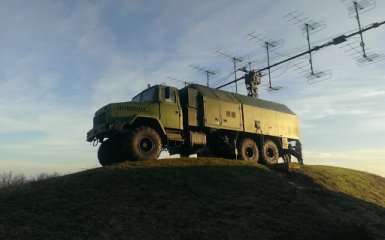Due to the extremely important role of drones in Russia's criminal war against Ukraine, the Ukrainian military is currently trying to gain an advantage through air defence systems.
What is known about the growing role of EW to protect against enemy drone attacks
Air defence was once the preserve of specialised units with expensive equipment to destroy aircraft and missiles. Today, the proliferation of small and cheap drones is spreading to all armed forces, prompting governments and arms manufacturers to work to increase their capabilities, the publication noted.
According to the Ukrainian military, there are never enough means to fight the drones of the criminal army of Russia, as the occupiers use a large number of UAVs.
Some Ukrainian soldiers claim to use EW even in trenches on the frontline.
The soldiers say that due to the lack of modern weapons, they also use machine guns.
The activities of enemy UAVs are also significantly hampered by cloudy weather.
At the same time, Russia is changing the tactics of using drones. For example, Lancets used to fly alone, but now they are used in pairs.
The principle is as follows: if one Lancet is intercepted, the other will continue its flight, the Ukrainian military explained.
Military analysts and the Ukrainian military say Russia may have an advantage when it comes to electronic warfare against drones.
According to analysts at the Royal United Services Institute, the Ukrainian military spends about 10,000 drones per month.
At the same time, the criminal army of Russia has approximately one large infantry fighting vehicle for every 10 kilometres of the frontline.
Analysts note that the Russian occupiers effectively target Ukrainian military drones by sending a more powerful signal to control the drone than its actual operator.
This means that Ukrainian operators have to move closer to the frontline to maintain the signal.
However, in Ukraine, they also rely on their own modern EW stations.
This is a very serious part of our forward defence... we have not paid as much attention to it as we should have. Creating our own system to counter drones is now a priority for Ukraine, said Hanna Hvozdar, the Deputy Minister for Strategic Industries.
What is known about Ukraine's prospects for effective protection against UAVs
The Ukrainian military is already using some locally produced equipment.
According to Dmytro Sheynert, the developer of one of Ukraine's electronic warfare systems, Oberig EW resembles a shield and was created by analysing Chinese anti-drone devices and finding out how they work.
The developer notes that the device is effective against small UAVs used by the enemy for reconnaissance or explosives.
Sheynert noted that an experienced operator can also use the device to intercept high-speed UAVs.
Drones can be shot down by missile defence systems that the West has deployed to Ukraine, including Patriot, NASAMS and IRIS-t. But this is an expensive option. Patriot missiles can cost $3 million each, and some commercial drones can be purchased for as little as hundreds of dollars.
At the same time, given the rapid development of unmanned warfare, many countermeasures have been developed only recently.
Earlier this year, the United States sent Ukraine 14 new anti-drone systems called Vampires, a missile system manufactured by L3Harris Technologies. The system can be mounted on pickup trucks and engage targets with laser-guided missiles.
In August, the Norwegian arms manufacturer Kongsberg began supplying Ukraine with several anti-drone systems called CORTEX Typhon, the development of which was completed only this year. Its development was partly influenced by the war in Ukraine, including the need to simplify its operation so that the crew could be quickly trained.
More on the topic
- Category
- Ukraine
- Publication date
- Додати до обраного


